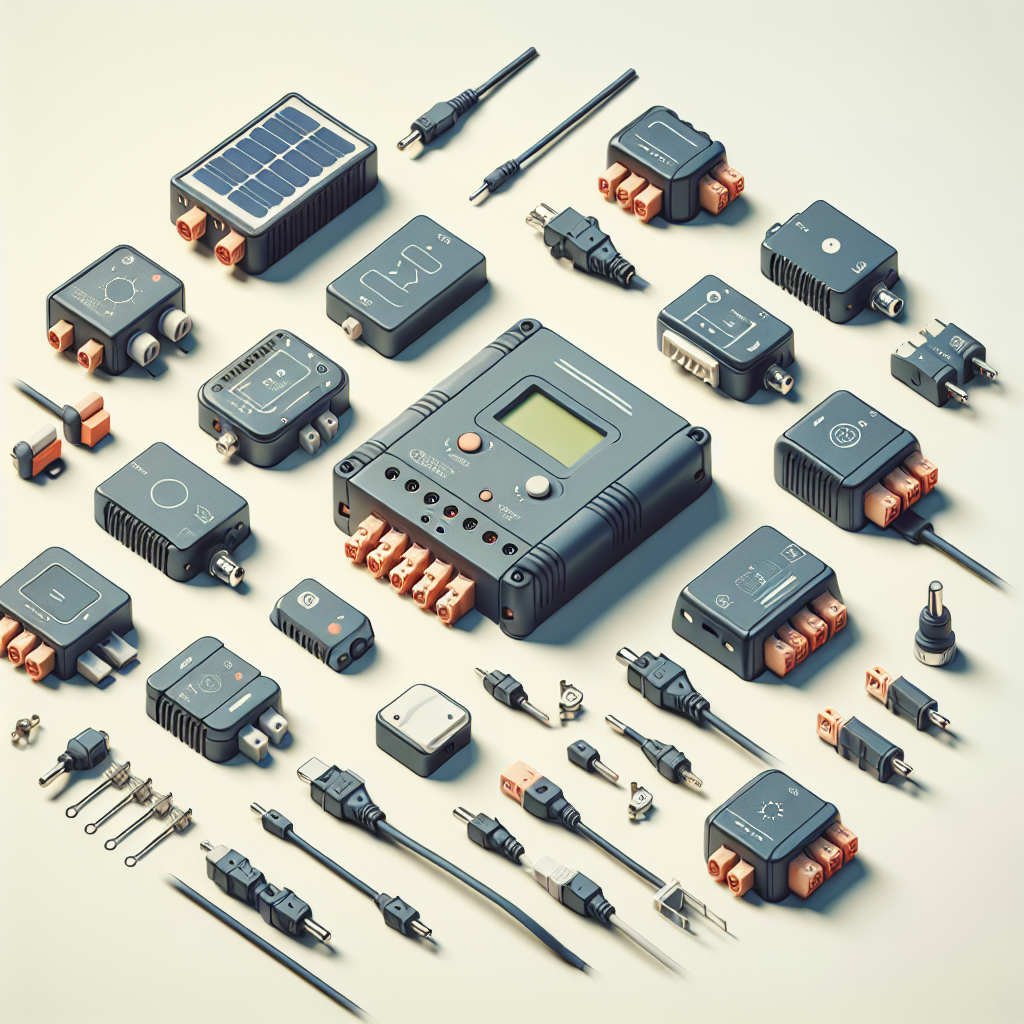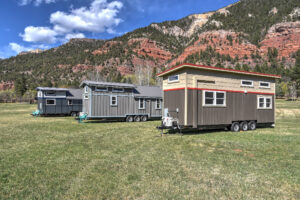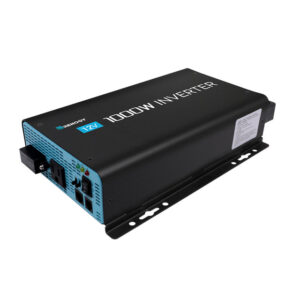
Key Takeaways
-
Understanding the difference between MPPT and PWM solar charge controllers is crucial for optimizing your tiny home’s solar system.
-
MPPT charge controllers are more efficient, especially in variable weather conditions, but come at a higher cost.
-
PWM charge controllers are cost-effective and work well in smaller systems with consistent sunlight.
-
Choosing the right charge controller depends on your solar system’s size, the climate you live in, and your budget.
-
Proper installation and positioning of your solar panels can greatly enhance the performance of your charge controller.
Harnessing the Sun: Picking the Right Charge Controller for Your Tiny Home
When you’re powering a tiny home with solar energy, every bit of efficiency and cost-saving counts. That’s why choosing the right solar charge controller is not just a technical decision; it’s a critical step in ensuring your tiny home remains powered up without breaking the bank. But don’t worry, I’m here to walk you through it, step by step.
What Charge Controllers Do
Imagine your solar charge controller as the heart of your solar power system. Its job is to regulate the energy flowing from your solar panels to your battery bank. Without it, you risk overcharging and damaging your batteries, which can be costly to replace. A good charge controller not only protects your batteries but also maximizes their lifespan and efficiency.
MPPT vs PWM Basics
There are two main types of solar charge controllers: Maximum Power Point Tracking (MPPT) and Pulse Width Modulation (PWM). Understanding the difference between these two can be a game-changer for your tiny home’s solar setup.
-
MPPT: These controllers are like the brainy overachievers. They constantly adjust their input to pull the maximum power possible from your solar panels. This is especially useful in overcast or changing weather conditions.
-
PWM: These are the steady, reliable types. They’re simpler and cheaper than MPPT controllers and are a great fit for smaller systems with consistent sunlight.
Let’s dive deeper into what makes MPPT controllers tick and why they might be the right choice for your tiny solar home.
MPPT Solar Charge Controllers: When Precision Meets Efficiency

The Science Behind MPPT Controllers
MPPT charge controllers are the high-tech option on the market. They are designed to extract the maximum possible power from your solar panels by adjusting their electrical operating point to the panels’ optimal voltage. This optimal point changes with weather conditions—think of it as a moving target that MPPT controllers are exceptionally good at hitting. This means you get more power throughout the day, from dawn until dusk, and during less-than-ideal weather.
Maximizing Solar Harvest with MPPT
So, why does this matter for your tiny home? Well, because space is at a premium, and you want to get the most out of the solar panels you can fit on your roof. MPPT controllers can increase your energy harvest by up to 30% under certain conditions. That’s a significant boost, particularly in the winter months or if you live in an area with variable weather.
Is MPPT Worth the Investment?
MPPT controllers do come with a higher upfront cost compared to PWM controllers. However, the increased efficiency means you might need fewer solar panels to meet your energy needs, which could save you money in the long run. Plus, the ability to maximize your power intake during low light conditions can be invaluable, especially if you’re living off-grid.

PWM Solar Charge Controllers: Simplicity and Affordability
Understanding PWM Operation
PWM controllers are the workhorses of the solar charge controller world. They are less complex than MPPT controllers and work by simply connecting the solar panels directly to the battery bank when charging is needed. This direct connection means the solar panels’ voltage is pulled down to match the battery’s, leading to some inefficiency, especially if the panel’s voltage is significantly higher than the battery’s.
Assessing the Affordability of PWM
One of the biggest draws of PWM controllers is their affordability. They can be a smart choice if you’re on a tight budget and have a small solar setup with consistent sunshine. Since they are less expensive, you can allocate more of your budget to other parts of your solar system or other tiny home needs.
Limitations of PWM in Tiny Homes
However, there are limitations to PWM controllers that you should be aware of. Their simplicity means they’re not as efficient in converting excess voltage into usable power. If your tiny home is in an area with less consistent sunlight, you might find that a PWM controller doesn’t harvest energy as effectively as an MPPT controller would.

Balancing Budget and Performance: Which to Choose?
Deciding between an MPPT and a PWM controller for your tiny home boils down to balancing budget constraints with the desire for efficiency. It’s a decision that hinges on several factors, including the size of your solar array, your geographical location, and the reliability of sunlight in your area.
-
Consider the size of your solar system: Larger systems tend to benefit more from MPPT controllers.
-
Assess your local weather patterns: MPPT controllers are better for areas with variable weather conditions.
-
Think about your budget: PWM controllers are more affordable and may be sufficient for smaller, simpler setups.
Deciding Factors for Tiny Home Owners
If you’re still unsure, think about the long-term. An MPPT controller could offer more flexibility if you plan to expand your solar system in the future. On the other hand, if your energy needs are modest and you live in a sunny area, a PWM controller might do just fine.
Real-Life Scenario: MPPT or PWM?
Let’s say you live in the Pacific Northwest, where the weather can be unpredictable. You have a modest-sized tiny home with a rooftop solar panel setup. In this scenario, an MPPT controller would likely be the better choice due to its ability to maximize power in various weather conditions. However, if you were in sunny Arizona with the same setup, a PWM controller could be more cost-effective while still meeting your energy needs.
Installation Tips for Optimizing Solar Power
Positioning Your Solar Panels
Getting the most out of your solar charge controller starts with proper panel placement. Make sure your solar panels are positioned where they can receive maximum sunlight throughout the day. Avoid shaded areas as much as possible, and consider adjustable mounts that allow you to change the angle of the panels as seasons change.
Wiring Details for Efficiency
Correct wiring is crucial for safety and performance. Use the right gauge of wire to minimize voltage drop, especially if your solar panels are far from your battery bank. Ensure all connections are tight and protected from the elements to prevent corrosion and ensure longevity.
FAQ
What is the average lifespan of a solar charge controller?
The lifespan of a solar charge controller can vary depending on the type, quality, and how well it is maintained. On average, you can expect a good quality MPPT controller to last around 10-15 years, while a PWM controller can last between 5-10 years. Regularly cleaning the controller and keeping it protected from extreme weather conditions can help extend its lifespan.
Can an MPPT controller charge a battery faster than PWM?
Yes, an MPPT controller can charge a battery faster than a PWM controller. This is because MPPT controllers are more efficient at converting the solar panel’s power, especially when the sunlight is not at its peak. They adjust to the panel’s maximum power point, providing more energy to the battery in a shorter amount of time.
How do I know if my tiny home needs an MPPT or a PWM controller?
Choosing between an MPPT or PWM controller for your tiny home depends on several factors:
-
The size of your solar array: Larger arrays generally benefit more from MPPT controllers.
-
Your geographic location and weather conditions: MPPT controllers are better for areas with variable or less intense sunlight.
-
Your budget: PWM controllers are more affordable and may be sufficient for smaller setups with consistent sunlight.
Consider these factors carefully to make the best decision for your specific situation and energy needs.
In conclusion, whether you choose an MPPT or a PWM controller, it’s essential to match your choice to your tiny home’s solar needs, your living environment, and your budget. By doing so, you’ll ensure a well-powered home, efficient energy use, and a sustainable lifestyle. Remember, the right charge controller is the key to unlocking the full potential of your tiny solar home.



